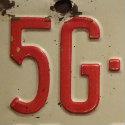
The director of the NYU Wireless research center is expecting the future 5G standard to implement multiple air interfaces and feature some backward compatibility with existing 4G LTE networks.
Light Reading spoke briefly to Polytechnic Institute of New York University professor Ted Rappaport Monday afternoon about the forthcoming fifth generation (5G) of wireless technology.
5G is a hot topic in the industry right now, as operators, vendors, and research centers are attempting to nail down the technology and standards that will underpin 5G. Initial deployments of 5G networks are expected to happen as early as 2020. (See DoCoMo's 2020 Vision for 5G.)
Rappaport is the founder and director of NYU Wireless, an academic research center that combines wireless engineering, computer science and medicine. His recent work has included research into high-frequency millimeter wave (mmWave) technology and its applications for 5G. (See Samsung: Taste the 5G Rainbow!)
See this video for more on early work by NYU Wireless on mmWave in Manhattan in 2012.
Millimeter wave radios ride on frequencies from 30GHz to 300GHz. They don't have the range or indoor penetration capabilities of lower frequency radios, which are typically used in cellular communications today. Vendors, however, are starting to combine technologies such as beam-steering and multiple input, multiple out (MIMO) adaptive antenna arrays to start to develop densely-packed radio access network (RAN) systems that should deliver much higher speeds than can currently be achieved, albeit over shorter distances. (See 60GHz: A Frequency to Watch.)
See this article for more on the history and possibilities of mmWave, smart antennas, and beamforming.
"I think there will be multiple [air] interfaces for 5G," Rappaport tells us, citing the ability of modern silicon to support several multiple wireless interfaces on a chipset.
He expects millimeter wave radios, and different modulation schemes than the Orthogonal Frequency Division Multiple Access (OFDMA) technology that underpins current 4G technology, to be part of the 5G specifications. (See Radio Revolutions on the Road to 5G and Spectrum Muddle at the 5G Huddle.)
"I think you'll have different modulations for different channel conditions," Rappaport says. Yet he still expects that 5G will retain some backwards compatibility with existing 4G networks.
All this concurs with what some others in industry have been telling Light Reading recently. Ericsson AB (Nasdaq: ERIC)'s CTO Ulf Ewaldsson said earlier this month that the vendor is looking at mmWave bands "beyond 15GHz" and at 60GHz as prospects for 5G, while stressing that LTE support would still be needed. (See Ericsson CTO: 5G Needs Broad Brush.)
For more on 5G strategies, check out our 5G channel here on Light Reading.
Part of the reason for this is that the industry is expecting 5G to support a vast swathe of different applications. Dense, high-speed networks are just one aspect of the aspirations for 5G.
Low-power, low-bandwidth connections to support machine-to-machine (M2M) communications for devices such as smart power sensors that require a battery life of months or years (rather than days) are also part of the 5G mix. (See 5G Will Give Operators Massive Headaches – Bell Labs.)
Hence, it is becoming increasingly obvious that one radio interface will not fit all.
Rappaport, meanwhile, notes that there are still questions around exactly what technologies 5G will encompass. In particular, as wireless radios move closer together with cellular small cells and WiFi access points covering short-range communications at high speeds, the NYU man wonders whether it makes sense to incorporate unlicensed technology as part of any future 5G specification. (See Sprint's Saw: '5G' Opp Is Moving Signal Closer to Customers.)
Rappaport says that operator attitudes to LTE-Unlicensed, which runs the 4G technology over 5GHz unlicensed band, could be a "harbinger" to whether combining licensed and public spectrum in the 5G standard happens. So far only China Mobile Ltd. (NYSE: CHL) and Verizon Wireless have supported a joint Qualcomm Inc. (Nasdaq: QCOM)-Ericsson proposal around LTE-U put forward at a 3rd Generation Partnership Project (3GPP) in December 2013. (See Why Some Operators Think LTE-U Is Rude.)
Specifically, some are concerned that LTE-U could dilute their substantial existing investments in WiFi hotspot networks. Verizon, of course, hasn't put the kind of money into WiFi that rival AT&T Inc. (NYSE: T) has. (See Jury Still Out on LTE-Unlicensed.)
For this reason, Rappaport says, the role of licensed and unlicensed spectrum in any forthcoming 5G standard "is still up for debate."
— Dan Jones, Mobile Editor, Light Reading
About the Author(s)
You May Also Like











